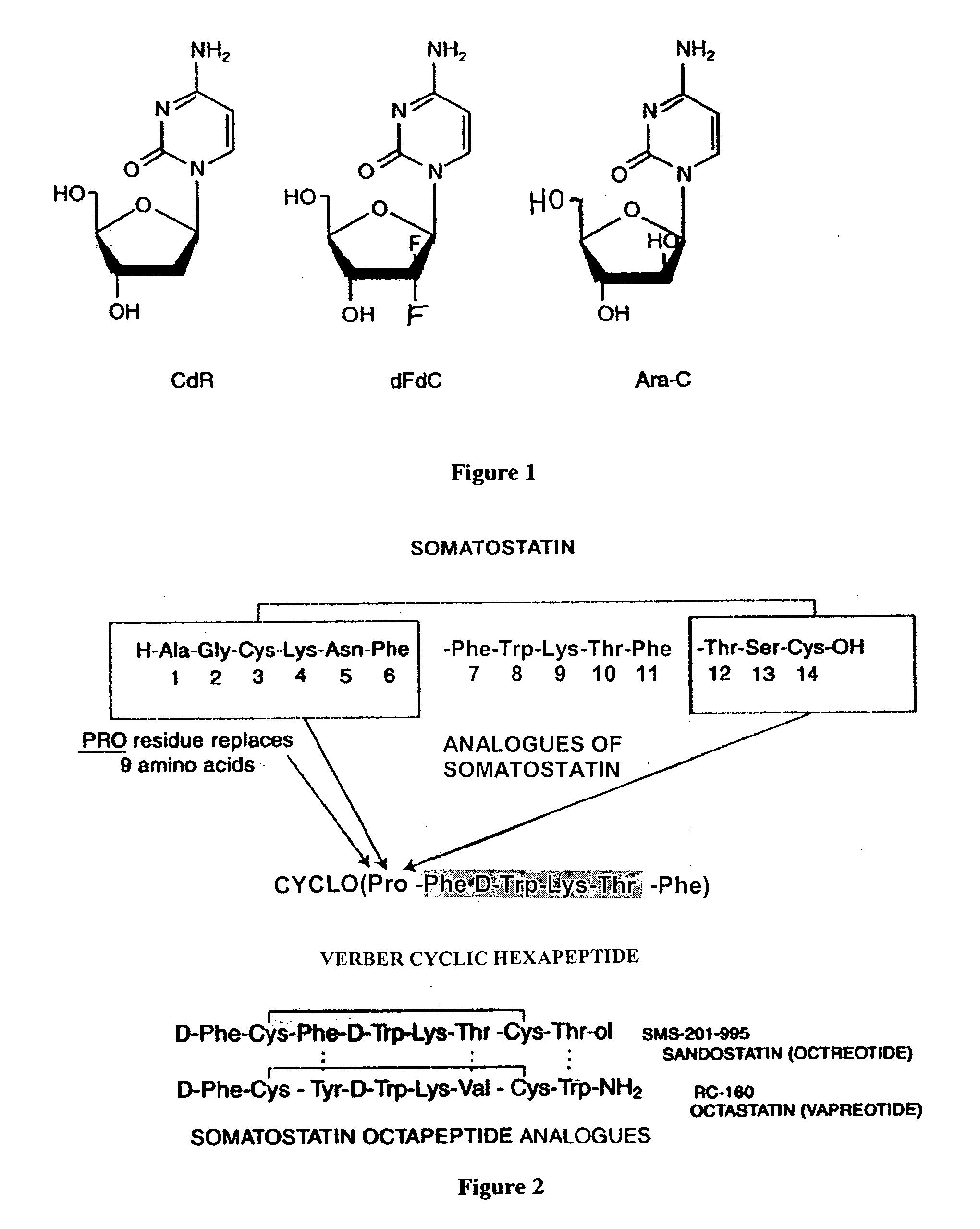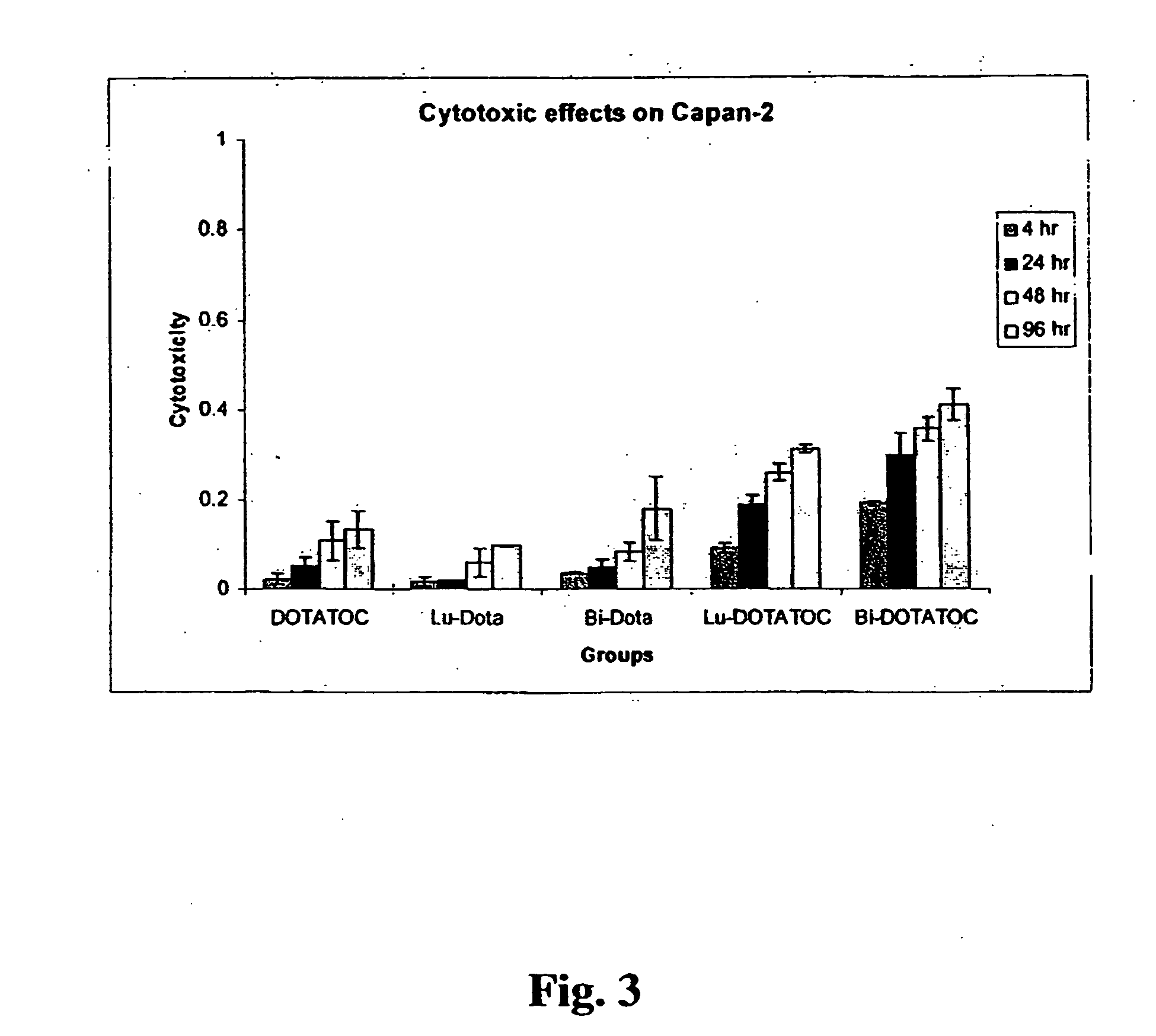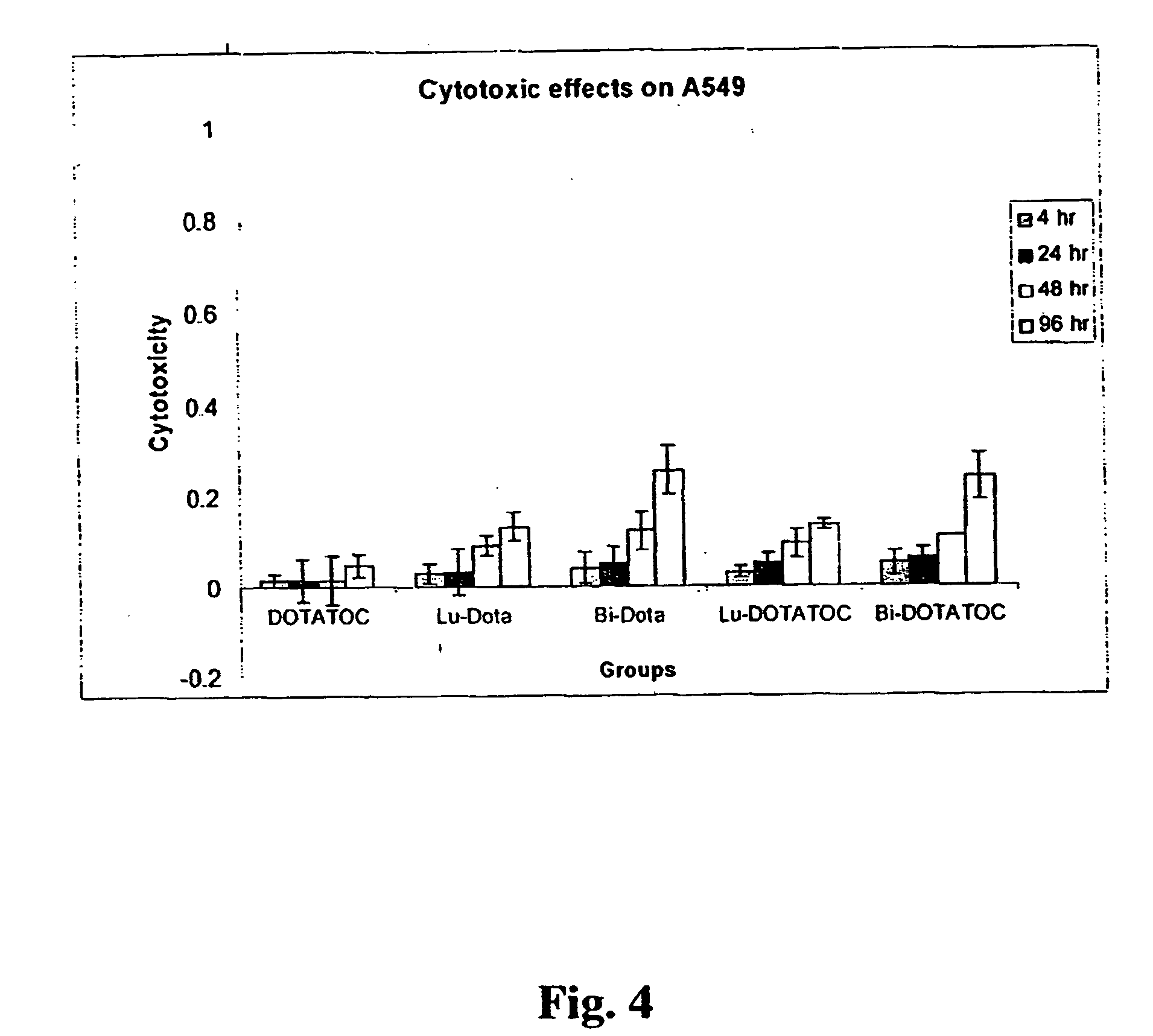Anticancer therapy
a technology of anticancer and chemotherapy, applied in the field of anticancer therapy, can solve the problems of reducing the effect of cancererous or precancerous cells, and achieve the effects of reducing the likelihood of precancerous conditions, shrinking cancer or tumors in patients, and inhibiting the growth of cancer
- Summary
- Abstract
- Description
- Claims
- Application Information
AI Technical Summary
Benefits of technology
Problems solved by technology
Method used
Image
Examples
example 1
Cytotoxicity of Radiolabeled Somatostatin Analog
[0115] The somatostatin receptor (SSTr)-positive human pancreatic adenocarcinoma cell line Capan-2 was used as the test cell line, and the SSTr-negative human lung carcinoma cell line A549 was used as control cell line. Radiolabeled somatostatin analogs 213Bi-DOTATOC and 177Lu-DOTATOC were shown to be much more cytotoxic than non-somatostatin receptor-specific 213Bi-DOTA and 177Lu-DOTA in the somatostatin receptor expressing cell line Capan-2 (FIG. 3). However, when 213Bi-DOTATOC and 177Lu-DOTATOC cytotoxicity were compared with 213Bi-DOTA and 177Lu-DOTA cytotoxicity in somatostatin receptor negative cell line A549, no difference was observed (FIG. 4). FIG. 3 shows the cytotoxic effects of 37,000 becquerels (37 kBq) of 177Lu and 213Bi labeled to DOTA and DOTATOC on somatostatin receptor expressing cell line Capan-2. FIG. 4, on the other hand, shows the cytotoxic effects of 37 kBq of 177Lu and 213Bi labeled to DOTA and DOTATOC on somat...
example 2
Effects of Gemcitabine Pre-treatment on Somatostatin Analog Cytotoxicity
[0116] One μg / mL Gemcitabine HCl was added to a somatostatin receptor expressing cell line (Capan-2) two hours prior to exposure to radiolabeled recognition ligand in order to evaluate the additive effects of gemcitabine when the cells were still exposed to gemcitabine and radionuclides. Note that this procedure is different from radiosensitivity studies where gemcitabine is washed off before the replenished cells are exposed to radiation. FIG. 5 shows the combined cytotoxic effects of 37 kBq of radionuclide labeled to DOTA and DOTATOC in combination with 1 μg / mL gemcitabine pre-treatment on somatostatin receptor expressing cell line Capan-2.
example 3
Effects of Gemcitabine and Radiolabeled Somatostatin Analog on Apoptosis
[0117] Alpha emitters such as 213Bi are known to cause G2M arrest and induce apoptosis in cancer cell lines. Experiments were thus performed to evaluate radiation-induced apoptosis and the radiobiological and radiotherapeutical relevance of this mode of cell death in selection of a radionuclide for therapy. The results are provided in FIG. 6, which shows the apoptotic effects of 37 kBq of 177Lu and 213Bi labeled to DOTA and DOTATOC on the somatostatin receptor expressing cell line Capan-2. As expected, high-linear energy transfer (LET) alpha emitter 213Bi exhibited much greater induction of apoptosis compared to that of the low-LET beta emitter 177Lu. At 48 hours, 213Bi-DOTATOC exhibited approximately 4 times greater induction of apoptosis than 177Lu-DOTATOC, and 100 times greater induction of apoptosis than non-radioactive DOTATOC.
[0118]FIG. 6 also shows the effects of incubation time. For example, with 177Lu...
PUM
| Property | Measurement | Unit |
|---|---|---|
| pH | aaaaa | aaaaa |
| volume | aaaaa | aaaaa |
| concentration | aaaaa | aaaaa |
Abstract
Description
Claims
Application Information
 Login to View More
Login to View More - R&D
- Intellectual Property
- Life Sciences
- Materials
- Tech Scout
- Unparalleled Data Quality
- Higher Quality Content
- 60% Fewer Hallucinations
Browse by: Latest US Patents, China's latest patents, Technical Efficacy Thesaurus, Application Domain, Technology Topic, Popular Technical Reports.
© 2025 PatSnap. All rights reserved.Legal|Privacy policy|Modern Slavery Act Transparency Statement|Sitemap|About US| Contact US: help@patsnap.com



